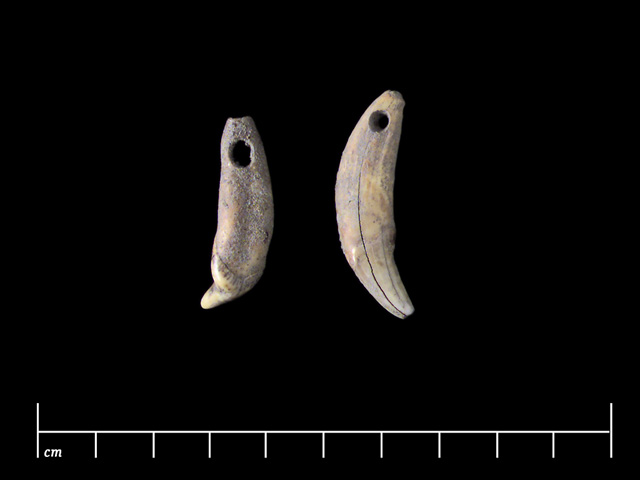 STUDIO PHOTOGRAPHS
STUDIO PHOTOGRAPHSIntroduction | Research | People | Tools
 STUDIO PHOTOGRAPHS
STUDIO PHOTOGRAPHS
BEAR-TOOTH PENDANTS (TYA s.n./MLDP9702)
Type: Bear-tooth pendants.
Use: Pendant, amulet or jewel.
Site: Raisio, Ihala, Mulli abode.
Period: Viking Age / Crusade Age / Early Middle Ages.
Dating: 980-1220 A.D.
Photographer: Antti Huittinen.
Bear-tooth pendants are interesting artifacts of the Viking Age. Both genuine teeth and bronze imitations were used as pendants. Some 70 items like this are known from the Viking-Age Finland. Bear teeth were supposed to contain magical powers.
The cult of bears may have had a central position within the ancient religion of the northern peoples. The Finnish religion, too, had a multi-part ritual play called karhunpeijaiset (a wake-feast celebrating the killing of a bear and soothing its spirit). Literary descriptions of the bear-soothing wake have been preserved from central and eastern Finland from the 17th century.
The felled bear was borne solemnly into the room where its meat was prepared and eaten. This ceremony included singing of runes and different kinds of rituals. Thus the spirit of the dead animal was appeased. Finally, the scull of the bear was taken back into the forest and placed on the branches of a pine. From there the the spirit of the bear could see into which direction it was to start its wanderings. Sometimes the bear-soothing wake also bore some traces of a wedding-feast, with a girl playing the bear's fiancée. This was probably motivated by the belief that the bear was the forefather of humans and reincarnated after the wedding ritual.
Other related pictures:
Other related topics:
Introduction | Research | People | Tools